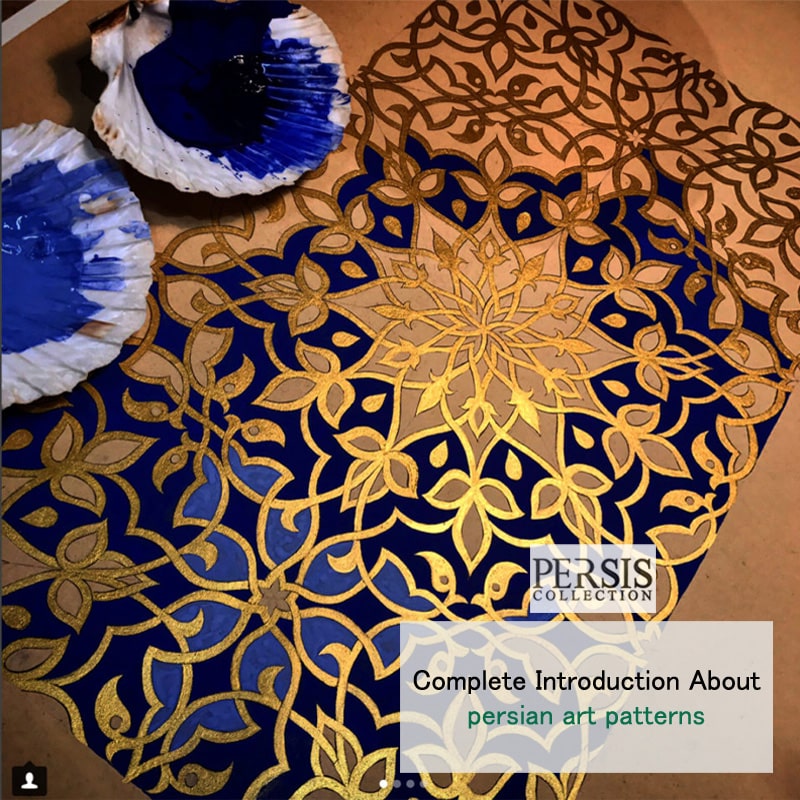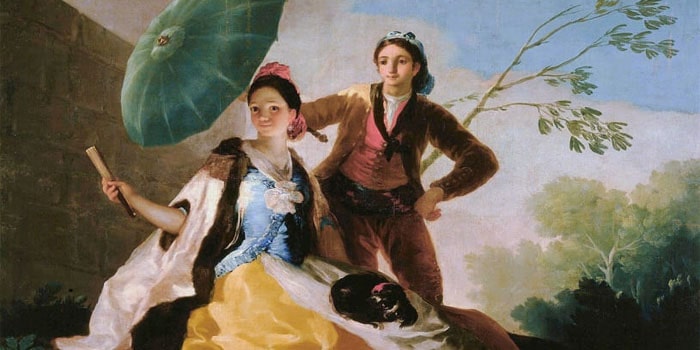About Persian art patterns

- tina atrg
- 13 September 2022
- Persian art
- 4 minutes
Painting, as a type of Persian art, is a process in which color creates a pattern on a surface such as paper, canvas, or wall, and a work of art is created. The person who performs this process is called a painter. The age of painting among humans is six times as old as the use of written language.
Painting can be divided into two main types:
- Visual painting: the artist conveys to the audience what he sees in nature and living things, without veils and only through the canvas.
- Abstract painting: the artist has reached an understanding of painting and art that gives depth to his painting beyond a normal view and prompts the viewer to think more deeply.
In the following, we will introduce the types of designs of this Iranian art and its different styles.

Persian art patterns
Types of painting styles in Persian art patterns
In terms of style, this Persian art can be placed in several categories, some of these categories are:
- Realism
- Impressionism
- post-impressionism
- Neo-impressionism
- Expressionism
- Abstract expressionism
- Cubism (volumetrics)
- Futurism
- Vorticism
- Romanticism
- Presentism
- Minimalism
- Surrealism
- Graffiti
- Up art
- Barbizon
- Photorealism
- Tonalism
- Baroque
- Stoicism
- Abstract
- Constructivism
- Rococo
- Mysore
- Iranian miniature
- Ottoman miniature
- Modernism
- Elementary art
- Postmodernism (ultra-modern)
- Avant-garde (pioneer, associated with modern and non-traditional art schools)
- Structuralism
- Hard train
- Pointillism
- Abstract Expressionism
- Dada and surrealism
- Fauvism
- Symbolism and Art Nouveau
- Neoclassicism
- Manners
- Classicism
- Dadaism
In the following, we will introduce some of these Persian art styles so that you can get to know more about their most important types.
Realism
Realism means realism, a way of thinking based on the belief that the existence of objects and phenomena is independent of human perception and senses, that is, it is a way that in that, the artist should refrain from any “emotionalism” in the representation of nature (nature without humans and with humans). In the field of art and literature, realism is a way of visualizing facts and realities.
This style of Persian art, i.e., realism, is the opposite of the romantic style. The main distinguishing feature of realism (precisely 19th-century realism), which is the subject of our discussion here, is the realism of the middle of the 19th century and its main representative (Courbet) avoids any kind of pleasing themes, does not make slogans and makes sweet promises, the reality is the same
. It shows as it is. The most important branch of realism in the 19th century is social realism, which discusses social and political issues. As we mentioned above, the main representative of realism is (Gustave Courbet), a great French painter, and (Illyarpin), a Russian painter.
Famous realist painters in Europe:
Gustave Courbet, Jean-Francois Millet, Ennore Daumier, Edouard Manet and famous Russian artists: Ivan Shishkin, Ilyar Payne, Kramskoy.

Persian art patterns – Realism
Romanticism
Romanticism, as its name suggests, should be considered an emotional reaction against rationality. A desire to highlight the human self, a tendency toward fantasy and dreams, towards the historical past, and towards unknown lands. This style is one of the important styles of Persian art.
Romanticism means tending to romantic issues (imaginary and unreal) and it refers to the way in which opposition to the philosophical, political, and artistic foundations of neoclassicism arose in Europe at the end of the 18th century and the beginning of the 19th century. The term romanticism represents a way of thinking in which emotion played a vital role.
The romantic way, due to being tied to feelings and emotions, was based on knowledge that was free from any influence of tradition.
The romantic artist sought to find a deeper reality than tradition and rules and wanted to recognize the (natural) human being that was hidden behind the mask of the traditional man-made society. The 18th century, which was the century of criticism and analysis, provided the intellectual ground for romanticism by allowing heated debates about good and bad.
Good, from the point of view of the romantic artist, it was not a work that had harmonious proportions and components, but it was a work that created pleasant emotions in the viewer, and they used art as a kind of means of stimulating emotions. Delacroix and Jericho are two of the most famous artists of romanticism.

Persian art patterns – Romanticism
Impressionism
Impressionism can be considered the first different modern movement in the field of Persian art. This movement flourished in Paris in the 1860s and its influence appeared in all of Europe and then in America.
Its pioneers were artists who boycotted official and government exhibitions and avoided academic art institutions. The main goal of Jenish Impressionism was to record the transient and emotional impact of a scene – an impression that the subject makes on the eye in a fleeting moment.
This title was adapted from a painting (Monet) called (Impression of sunrise) which showed the play of light on water. The mentioned title was used for the first time in an exhibition of works (Monet, Renoir, Sisley, Pissarro, Cézanne, Degas) and several others.
The main goal of impressionism was to achieve a new naturalism based on the careful analysis of colors and shades of light. Impressionists wanted to show the play of light on objects, although in this work they relied on the results of scientific research by scientists such as Chevrolet. They obtained the combination of the color of the object with its complementary color (for example, when the color of an object was yellow, they made its shade from the combination of purple and yellow).
Also, to be able to show the games of light, they had to work at a faster speed, for this reason, the surface of their paintings usually had a rough texture and spots. Later, the impressionism style became almost scientific (neo-impressionism) in which colors were used scientifically.
The belief of the painters (neo-impressionism) was that with this method, visual honesty towards nature reached its perfection. But this excess in naturalism (scientific naturalism) naturally paved the way for an anti-naturalistic and general artistic reaction, the style (post-impressionism).









Comments